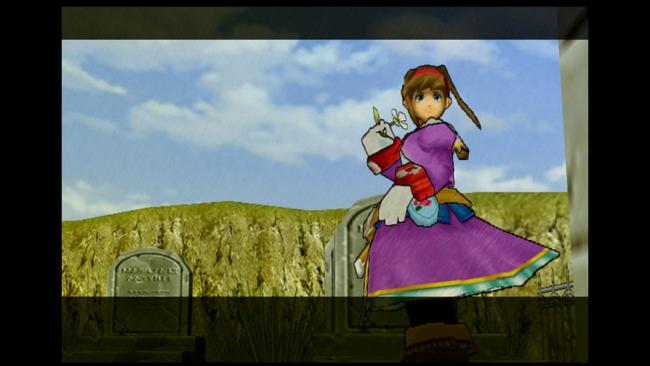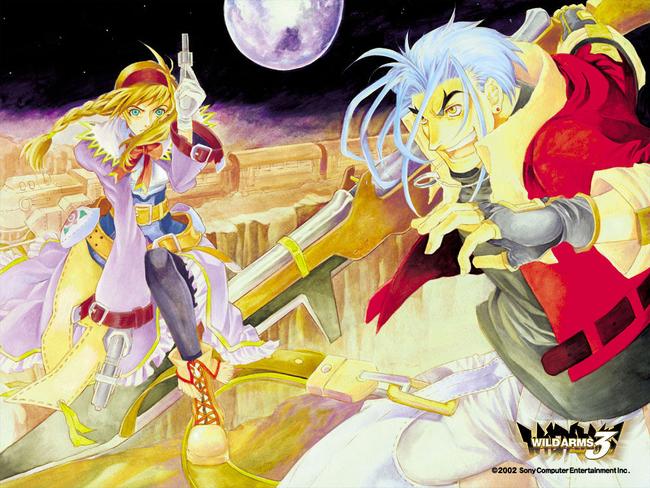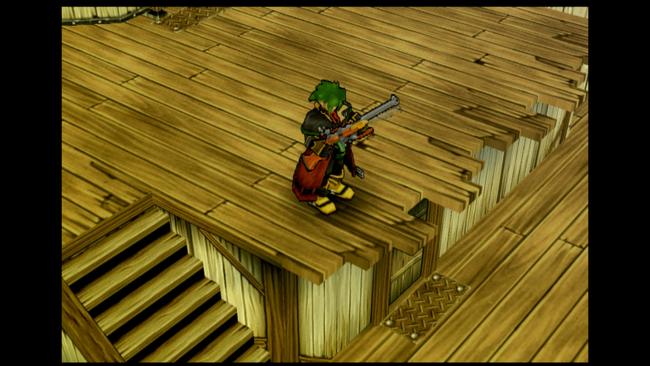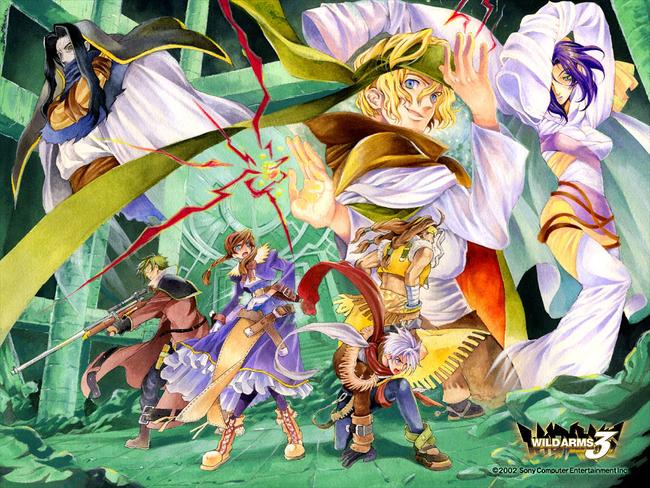Wild Arms 3 Blazes Bright as the Series' Best
Debuting in 1996, the Wild Arms series galloped onto Sony PlayStation as one of the first RPGs on the fledgling console, delivering a sci-fi western yarn with old-school turn-based RPG mechanics. After a few years and a sequel, Sony and Media Vision would continue the series on the PlayStation 2 with the launch of Wild Arms 3 in 2003.
In the years since, the franchise has all but remained stuck on the PlayStation 2, with two sequels and a remake of the first game also released for the console. It was then followed by strategy RPG Wild Arms XF for the PlayStation Portable in 2007, as well as a short-lived Japan-only mobile game, Wild Arms Million Memories, which launched in 2018 but shuttered in 2020.
Wild Arms was never quite able to live up to the spectacle of the Final Fantasy series, but it developed a fanbase in its own right. Wild Arms has garnered some attention recently, with the first two games now available digitally on modern PlayStation platforms. The series would go on to implement significant shifts in tone, combat, setting, and even genre in subsequent games. Wild Arms 3 remains the pinnacle of this classic series which, like any good cowboy, is a little rough around the edges.

Wild Arms 3 begins with an explosive opening scene involving a fateful encounter between our four heroes on a train. With guns drawn, the game halts the action and recounts each hero's individual journey leading to the train ride. Players are able to choose the order of the opening stories, a staple of the first two games that makes a final appearance here. These vignettes are great, zippy introductions to each character's personality and battle abilities. Before long, our scrappy crew is fully assembled and headed into the main story.
The group is led by Virgina Maxwell, an optimistic and earnest young woman who tries to give others the benefit of the doubt. She is joined by Clive Winslett, a loving father and husband who works as a bounty hunter. The group is rounded out with Gallows Carradine, a young tribesman eager to escape his ancestral obligations, and amnesiac Jet Enduro, who seemingly only remembers his love of weapons and money. The world of Filgaia has been pushed to the brink of desolation, and while the story is certainly not without flaws, Virginia and her group are endearing enough to keep players invested, even as the story becomes increasingly wild.

Combat in Wild Arms 3 features a refined version of the battle system from the earlier games, with turn-based encounters involving all party members. Series fans will especially admire the visual flourishes present, as all combatants scramble across the screen during battle -- the effect is even better if players are riding a horse, as battle takes place entirely on horseback. While these changes are wholly stylistic and do not impact how battle functions, it is visually delightful, if a bit silly.
Mechnically, though, combat is still input based. Each character uses their respective upgradable weapon, known as ARMs, as a primary weapon. To use magic or abilities, players must use a Force Points system common to the Wild Arms series, in which FP are accumulated each turn and when sustaining damage. Players can also expend Force Points to perform Force Abilities - think character-specific techniques that allow single-target spells to be used on entire groups, or amplify the accuracy or efficacy of healing items, for example.
Each character is also allowed to equip up to three Guardian Mediums, empowering each unit with magical abilities as well as special attributes. This additional mechanic is met with pared-down equipment to manage, as players only have to worry about the allocation of guardians and accessories in lieu of weapons and armor. The combination of upgradeable ARMs, customizable Mediums, and a dynamic Force Point system all converge together quite nicely for a thorough and flexible mechanical backbone that is the sharpest iteration of combat in the series. Subsequent titles in the series would abandon many of these concepts, to mixed success.

Outside of battle, gamers explore perilous dungeons boasting ample traps and tricky puzzles - another staple of the Wild Arms series. Each character has their own set of tools, requiring cycling between characters to deploy their respective tools to solve puzzles or reach treasure chests. Characters cannot jump, but there are plenty of tricky angles to negotiate in dungeons and when braving the frontier. In the two decades since the game’s release, these features are still compelling and immersive.
Perhaps the greatest improvement in Wild Arms 3 is presentation. The cel-shaded graphics provide a lovely storybook approach that dazzles; watch when Virginia is still but the vibrant colorings of her duster continue to dance, as if scattered by the desert wind. This aesthetic is fully embraced here but again left behind with later entries. The character and enemy models are significantly upgraded, and spell animations are impressive this time around. Michiko Naruke returns to provide the soundtrack, which excels in matching the rhythms of the story: what starts out with standard western fare finds elements of electronic trappings creeping in.It certainly assists in setting the scene for a dying world in dire straits.
Not every mechanic from earlier games is necessarily improved. World map exploration is sometimes a nasty chore, requiring players to walk around the world map searching for landmarks. Players are practically assaulted with too many random encounters, which makes searching for the next landmark even more frustrating. The game includes an interesting rechargeable mechanic to manage these fights, but it is not enough to offset the too-frequent combat or delay the sinking feeling that inevitable combat is just a few buttons presses away. The camera can be cumbersome or downright confusing, especially when it obfuscates pathways or necessary routes in a dungeon.

The Wild Arms series would move away from this combat system and themes with its next iterations, and has all but remained dormant for over fifteen years. In that time, I have replayed these games time and again, constantly returning to Wild Arms 3 because of its various strengths. When asked by friends to recommend a game in the series, Wild Arms 3 earns my full-throated support. It’s superior to Alter Code F, the PlayStation 2 remake of the very first game, as well as the two numbered sequels.
Wild Arms fans have been hungry for a while. Take it from me, someone who set up a second Apple account to download the region-locked gacha game. While the series in name is not set to continue formally, a spiritual successor was recently announced in Armed Fantasia. While not set in Filgaia, the game is clearly inspired by Wild Arms and features members of the same creative team.
Many fans are looking forward to a return to a western-inspired JRPG world, as evidenced by the massively successful Kickstarter campaign for Armed Fantasia. In the interim, curious gamers can always take a trek to the world of Filgaia while they wait. For those who haven’t experienced it, Wild Arms 3 is the series apex in terms of popularity and strength of gameplay. Charming characters, an out-there story, and classic turn based combat await any drifters brave enough to face the wastelands.